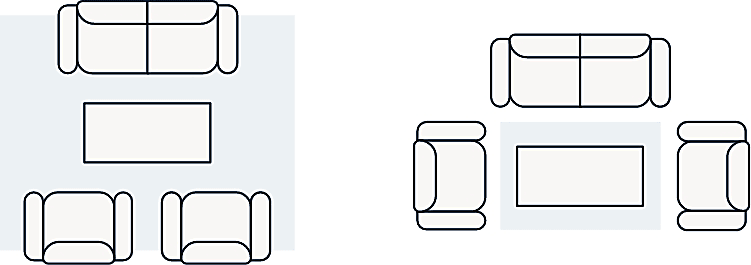How to Choose a Rug
This guide takes the guesswork out of choosing and buying rugs, so you can find the right size and style for your bedroom, dining room, living room, or beyond. The right rug will complement—not overwhelm—your decor, and can ground your furniture, define an entertaining space, or bring balance to a room. Area and accent rugs are available in a range of sizes to suit nearly any space, and come in durable materials including cotton, natural jute fibers, wool, and synthetic options. Explore our helpful size charts, plus more information on rug materials and construction types, for tips on choosing the best option for your indoor or outdoor gathering spaces.
1) Check Rug Size Charts To Find the Right Fit
Choosing the right size is one of the most important decisions when buying an indoor rug. A cohesive, beautiful space begins with good proportions: A rug that is too small may make your room look smaller, while one that is too large can make it feel imbalanced. Also, consider other furniture in the room and how it will impact layout and placement.
Most manufacturers use standard rug dimensions, although exact measurements may vary by a few inches. Always double-check the product’s specifications against your room size to be sure the rug will work. These rug size charts will help you visualize how certain standard-size rugs might look in your home, so you can choose the right floor covering to fit your space.
What Size Rug Do I Need For The Living Room?
Area rugs measuring 8 ft. x 10 ft. or 6 ft. x 9 ft. are often considered the best sizes for a living room, den, or bonus room—but you should choose based on the size of your space. These rugs are large enough that just the front legs of your primary furniture, such as a couch or accent chair, will fit over the edge. You can also center a smaller rug in your seating area beneath an ottoman or coffee table. A room-size rug—often 9 ft. x 12 ft. or 11 ft. x 14 ft.—requires a floating furniture arrangement, in which all legs of your couch or chairs rest on the rug, with excess around the edge.

Living Room Rug Layout Tip: Allow for at least 12 inches between the edges of an area rug and the walls.
